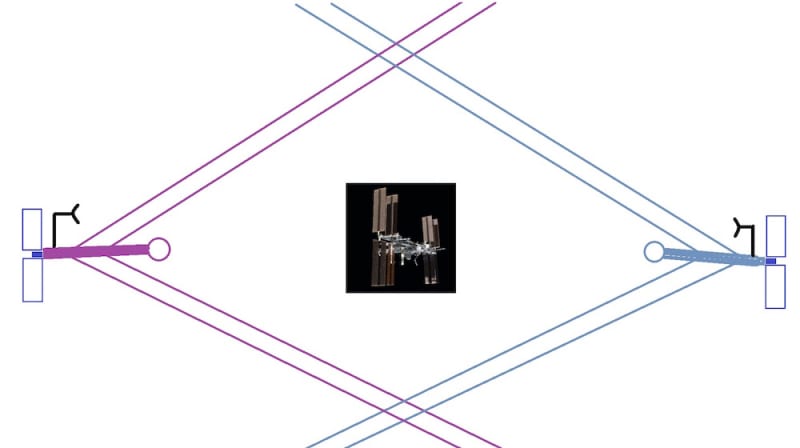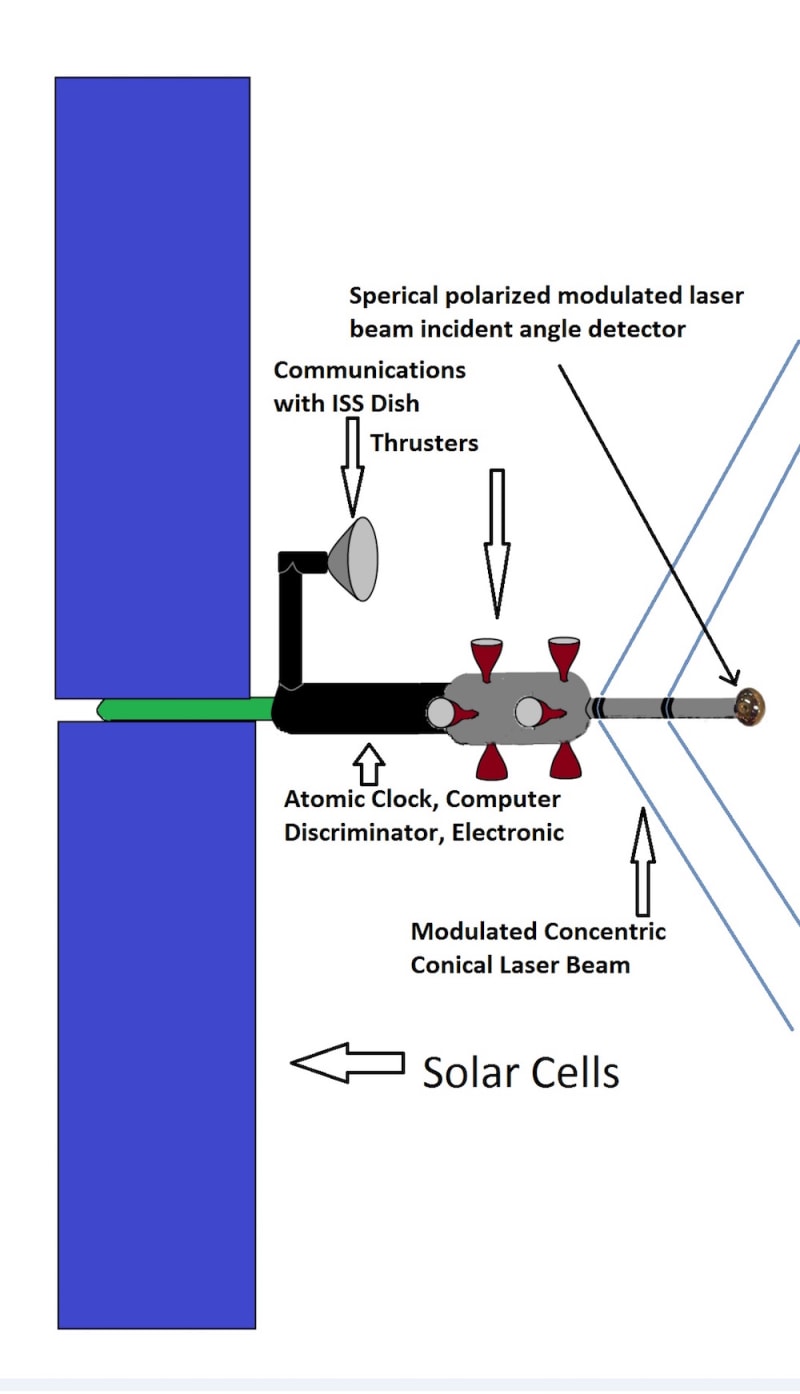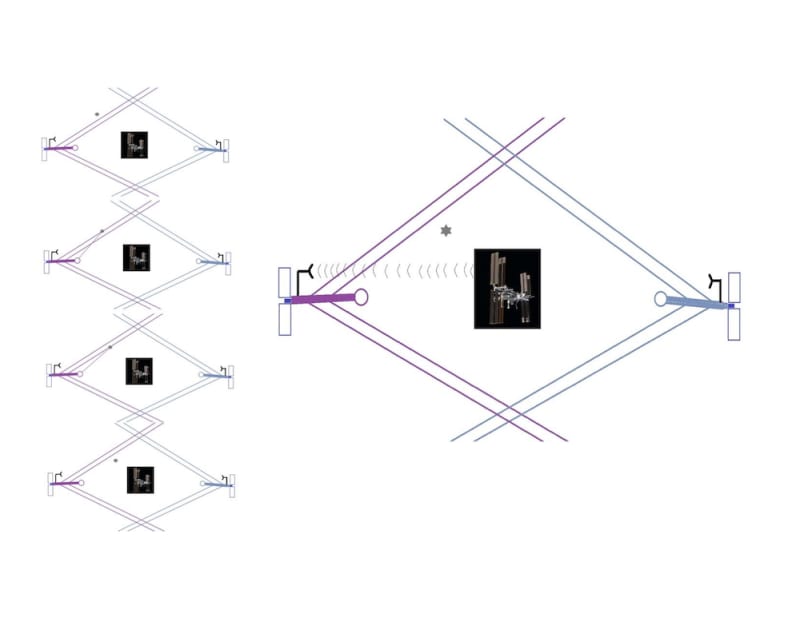The International Space Station (ISS) is subject to debris traveling at great speed from almost any direction. Normally debris is tracked by ground radar. However, it is limited in the size that it can see and sensor on Earth position. Therefore, a space based system would be desirable to detect debris and warn the ISS. This invention is designed to detect debris that threatens the ISS regardless of its entry angle.
This invention is comprised of two satellites to detect debris on a collision course with the ISS. Each satellite is in the same orbit as the ISS. One satellite is behind the ISS and the other in front of the ISS in the same orbital plane. Both are traveling at the same speed as the ISS with altitude control to adjust their orbit as the ISS adjust its orbit. Each satellite projects two concentric conical sheets of frequency modulated laser light. The two satellites' conical sheets of laser lights intersect. The volume inside the conical laser lights envelopes the ISS. Each satellite is equipped with a spherical sensor, aligned axially with the conical sheet laser beams. If debris crosses the first conical sheet laser beam, laser light reflects off of it and detected by the spherical sensor. The sensor is polarized so that only light that is perpendicular to the sphere is detected. The laser beam sheet is frequency modulated to allow the spherical sensor to exclude any other light signal from any other source. The sensor records the reflection’s azimuth and angle and triggers an atomic clock event marker. If the same debris crosses second conical sheet laser beam, the spherical sensor again calculated azimuth and angle and the atomic clock notes the span of time between the two pulses. Since the spacing between the two concentric conical sheet laser projects is fixed and the spherical sensor axis is a known distance from the vertex of the conical sheet laser beams, the satellites’ onboard computers can precisely calculate distance, direction and speed by noting the time between pulses together with the change in angle, the satellites distance from and alignment with the ISS. Since the laser beams are of a distinct frequency, the spherical sensor would only be looking for that frequency. This eliminates false positives. Moreover, the beam frequencies could be optimized to reflect off of a large range of debris materials surfaces. To distinguish debris crossing the front or the back beams, the front satellite’s laser beam modulation frequency is different from the rear satellite modulation frequency.
Depending on the spherical sensor’s size and debris reflective divergence angle, this detector might also be able to determine debris size as well. Since the conical sheet laser beams form a closed volume, the first reflected flash must come from the outside in unless it originates from the ISS, docking or undocking spacecraft or lost tools.
The figures show the sequence of event that happens to detect debris in the ISS’s cone of detection and warn the ISS.
Like this entry?
-
About the Entrant
- Name:Harry Archer
- Type of entry:individual
- Patent status:none








